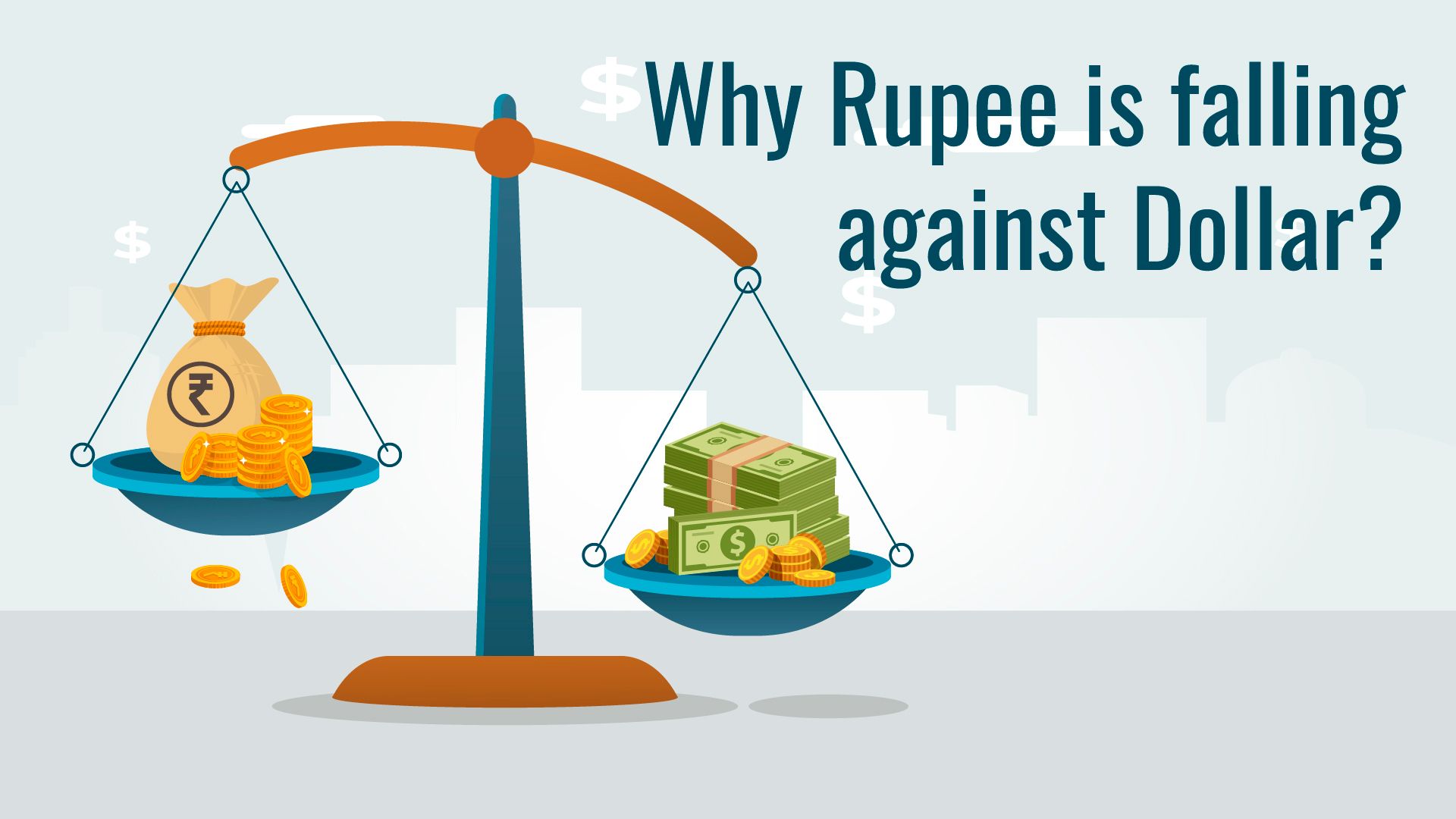Why Rupee is falling against Dollar?

The Indian rupee has been depreciating against the US dollar for the past few years, and this trend has continued in 2023 as well. There are several factors that are contributing to the fall of the rupee against the dollar. This blog will explore some of the key reasons for this trend.

- Current Account Deficit (CAD)
One of the primary reasons for the fall of the rupee is the widening of the Current Account Deficit (CAD). The CAD is the difference between the country's imports and exports of goods and services. When the CAD widens, it means that the country is importing more than it is exporting, which creates a demand for foreign currency, such as the US dollar. This demand for dollars leads to the depreciation of the rupee.
2. Increase in Crude Oil Prices
India is heavily dependent on oil imports, and when the price of oil goes up, it puts pressure on the country's foreign exchange reserves. This is because India has to pay more in foreign currency to import oil, which creates a demand for dollars, leading to the depreciation of the rupee.
3. Rise in US Interest Rates
Another reason for the fall of the rupee is the rise in interest rates in the United States. When the interest rates in the US rise, investors tend to move their money to the US to take advantage of the higher returns. This leads to a higher demand for dollars, which results in the depreciation of the rupee.
4. Political Uncertainty
Political uncertainty can also contribute to the fall of the rupee. In recent years, India has seen a rise in political instability, which has led to a decrease in foreign investment. This decrease in investment leads to a decrease in the demand for rupees, which leads to the depreciation of the currency.
5. Fiscal Deficit
Fiscal deficit occurs when a government's expenditures exceed its revenues, resulting in borrowing to cover the gap. This puts pressure on the government's finances and can lead to inflation. In turn, inflation can cause a decrease in the value of the currency, which can contribute to the depreciation of the rupee.
6. Foreign Institutional Investors (FIIs) Outflows
FIIs are investors who invest in Indian stocks and bonds. When FIIs invest in India, they bring in dollars, which strengthens the rupee. Conversely, when FIIs pull out their investments, they take their dollars out of the country, which can contribute to the depreciation of the rupee.
7. Trade Tensions
Trade tensions between countries can also impact the value of currencies. For example, in recent years, there has been a trade war between the United States and China, which has led to a decrease in global trade. As India is a major exporter, any decrease in global trade can impact the demand for Indian goods, which can contribute to the depreciation of the rupee.
8. Speculation in Currency Markets
Speculation in currency markets can also impact the value of currencies. Traders who speculate on the value of currencies can drive the value of the currency up or down based on their expectations. This can contribute to the volatility of the currency and impact its value over the long term.
In conclusion, the fall of the rupee against the dollar is a complex issue that is influenced by several factors, including the widening of the CAD, increase in oil prices, rise in US interest rates, political uncertainty, fiscal deficit, FII outflows, trade tensions, and speculation in currency markets. While the Indian government can take steps to address some of these factors, external factors such as global economic conditions and trade tensions are beyond its control.
